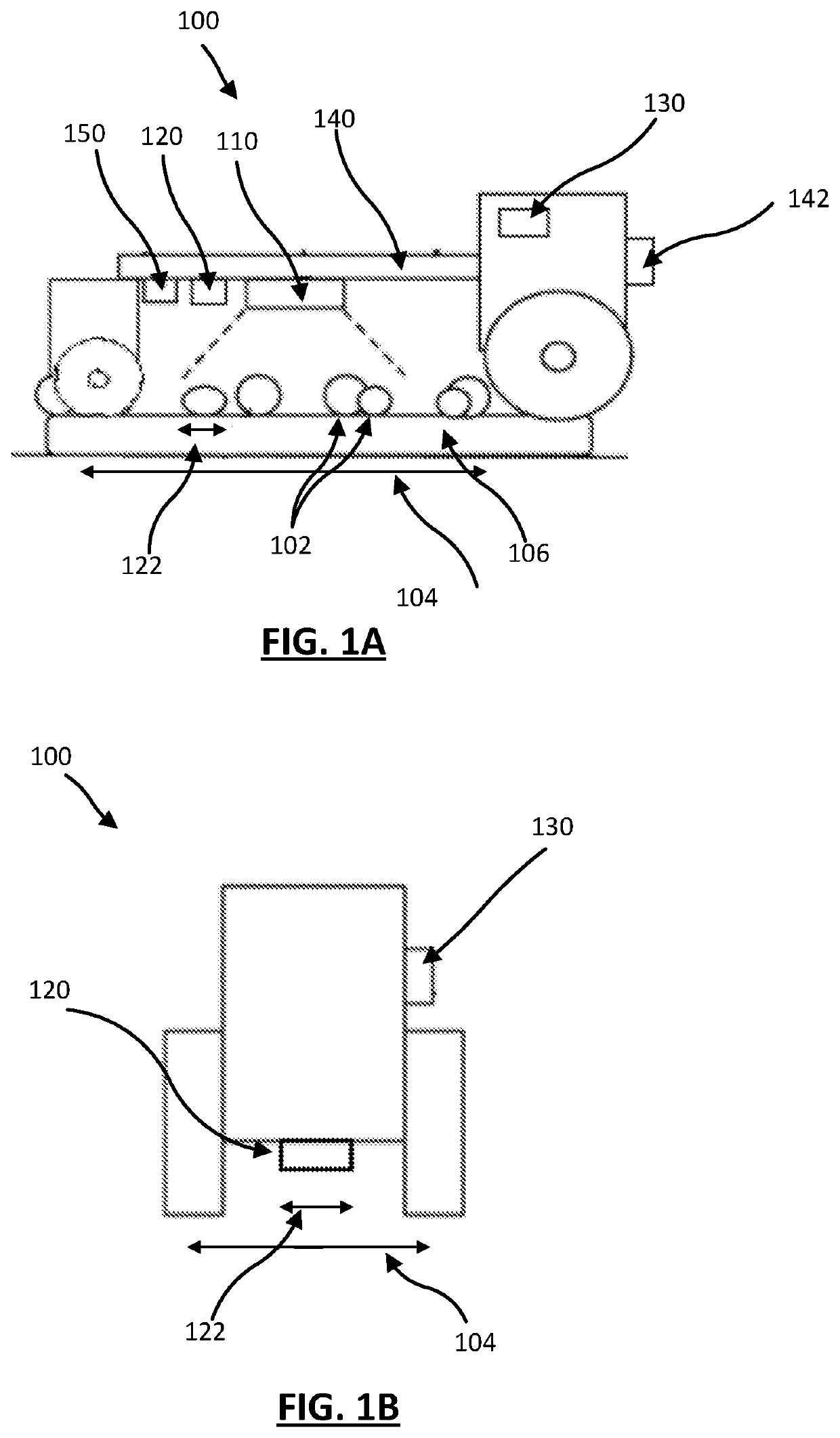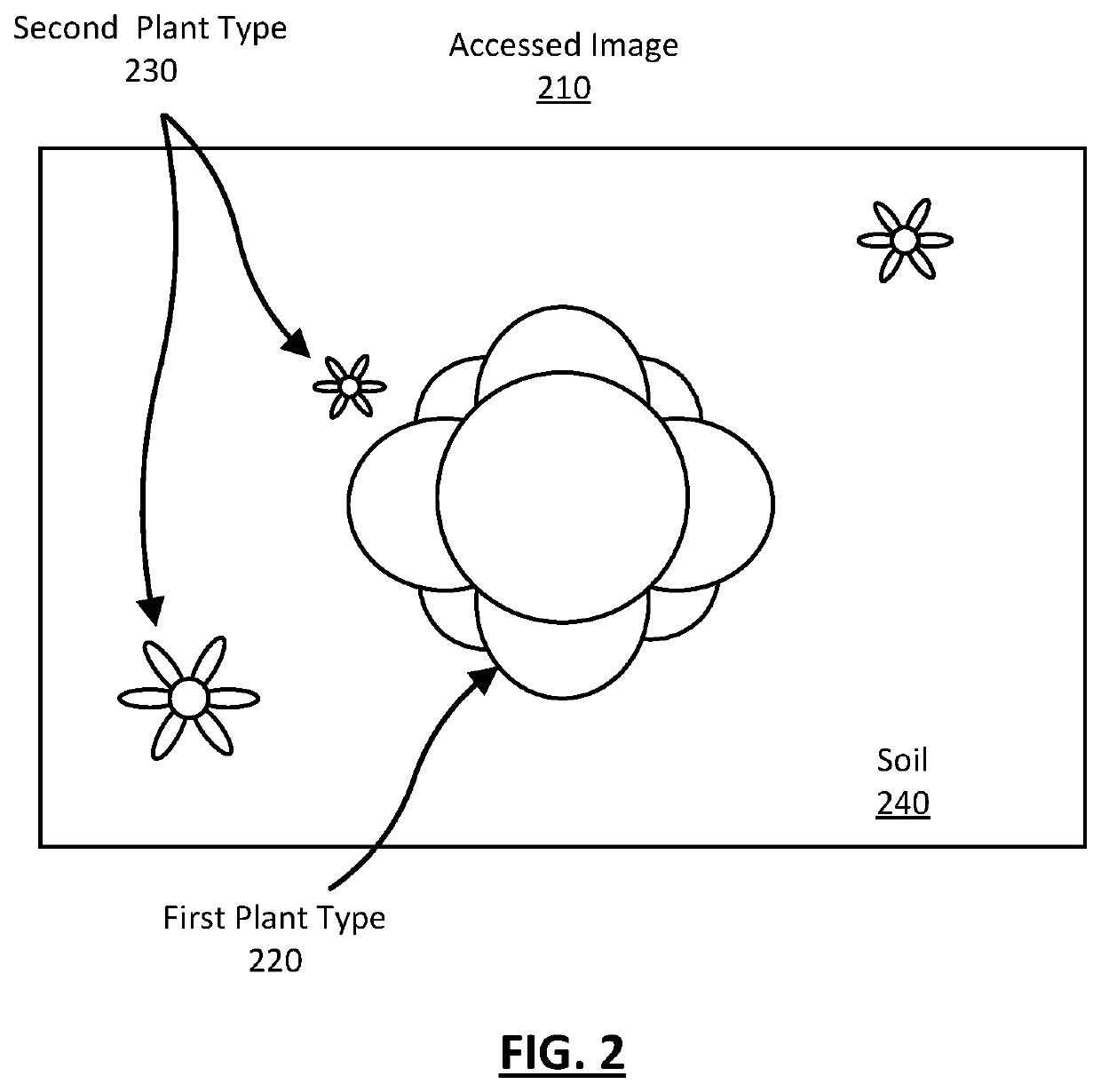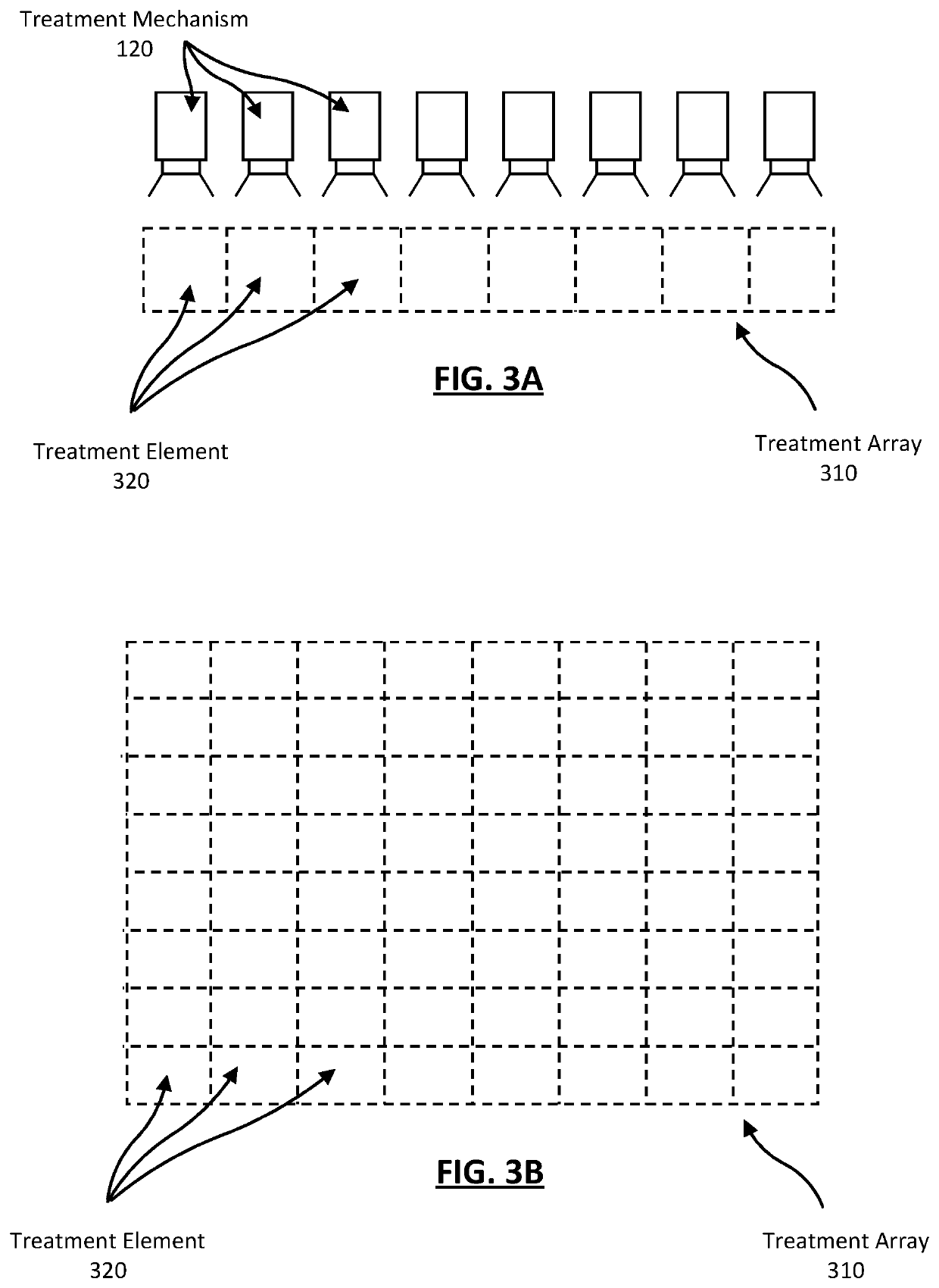Semantic segmentation to identify and treat plants in a field and verify the plant treatments
a segmentation model and plant technology, applied in the field of plant identification model to identify and treat plants, can solve the problems of waste, harmful to the health of the field, waste of improved spray techniques, etc., and achieve the effect of reducing the dimensionality of the imag
- Summary
- Abstract
- Description
- Claims
- Application Information
AI Technical Summary
Benefits of technology
Problems solved by technology
Method used
Image
Examples
Embodiment Construction
I. Introduction
[0028]Farming machines that treat plants in a field have continued to improve over time. For example, a crop sprayer can include a large number of independently actuated spray nozzles to spray treatment fluid on specific plants in a field. The farming can further include any number of detection mechanisms that can detect plants in the field and any treatments made to plants in that field. Recently, farming machines have included control systems executing algorithms to automatically detect and treat plants using the detection mechanisms. Traditionally, the algorithms are wasteful in that they treat areas in the field that do not include identified plants because, often, the algorithms sacrifice accuracy for processing speed.
[0029]Described herein is a farming machine that employs a semantic segmentation model that automatically determines, in real-time, plants in a field and treats the identified plants using a treatment mechanism. The semantic segmentation model encod...
PUM
 Login to View More
Login to View More Abstract
Description
Claims
Application Information
 Login to View More
Login to View More - R&D
- Intellectual Property
- Life Sciences
- Materials
- Tech Scout
- Unparalleled Data Quality
- Higher Quality Content
- 60% Fewer Hallucinations
Browse by: Latest US Patents, China's latest patents, Technical Efficacy Thesaurus, Application Domain, Technology Topic, Popular Technical Reports.
© 2025 PatSnap. All rights reserved.Legal|Privacy policy|Modern Slavery Act Transparency Statement|Sitemap|About US| Contact US: help@patsnap.com



